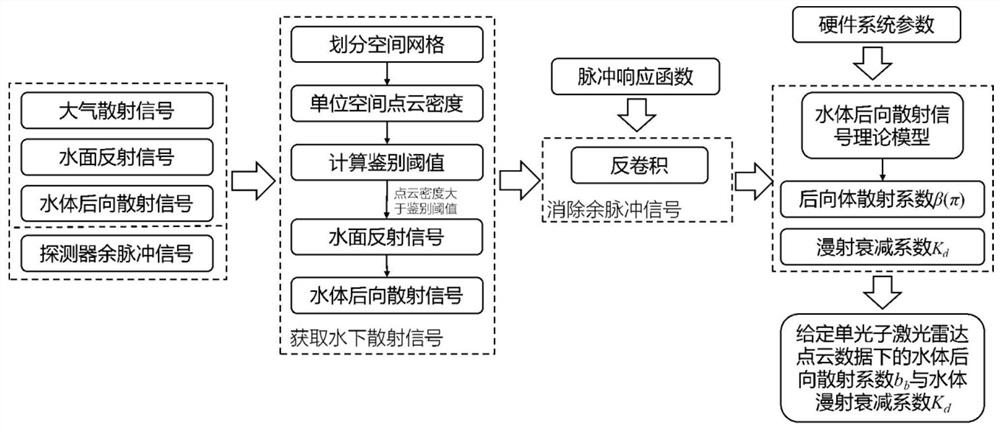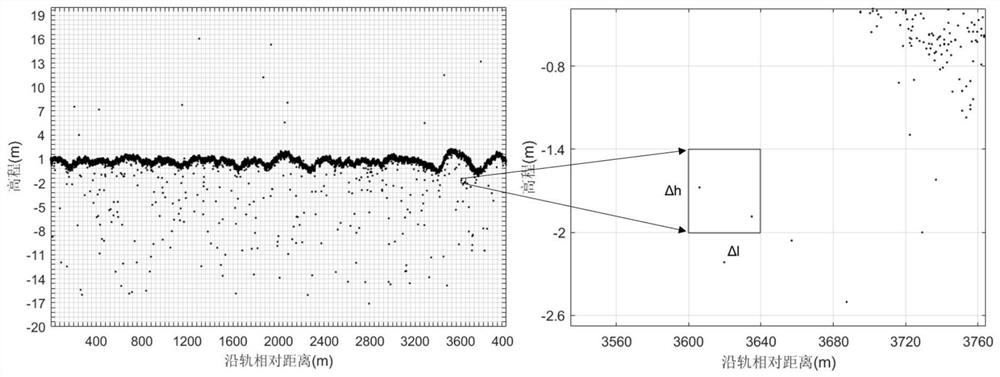Water optical parameter inversion method of satellite-borne single-photon laser radar
A technology of laser radar and optical parameters, applied in the field of laser remote sensing, can solve problems such as unsuitable single-photon system
- Summary
- Abstract
- Description
- Claims
- Application Information
AI Technical Summary
Problems solved by technology
Method used
Image
Examples
Embodiment Construction
[0034] In order to make the purpose, technical solutions and advantages of the present invention clearer, the technical solutions in the present invention are clearly and completely described below. Obviously, the described embodiments are part of the embodiments of the present invention, rather than all embodiments. Based on the embodiments of the present invention, all other embodiments obtained by persons of ordinary skill in the art without creative efforts fall within the protection scope of the present invention.
[0035] The present invention takes the system parameters and acquired data of the world's first space-borne single-photon laser radar ATLAS (Advance Topographic Laser Altimeter System) equipped on ICESat-2 (Ice, Cloud, and land Elevation Satellite-2) in the United States as an example. ICESat-2 / ATLAS has 6 laser beams, the laser pulse repetition frequency is 10kHz, the laser sampling interval along the track is 0.7 meters, and the spot diameter is 12 meters. Th...
PUM
 Login to View More
Login to View More Abstract
Description
Claims
Application Information
 Login to View More
Login to View More - R&D
- Intellectual Property
- Life Sciences
- Materials
- Tech Scout
- Unparalleled Data Quality
- Higher Quality Content
- 60% Fewer Hallucinations
Browse by: Latest US Patents, China's latest patents, Technical Efficacy Thesaurus, Application Domain, Technology Topic, Popular Technical Reports.
© 2025 PatSnap. All rights reserved.Legal|Privacy policy|Modern Slavery Act Transparency Statement|Sitemap|About US| Contact US: help@patsnap.com



